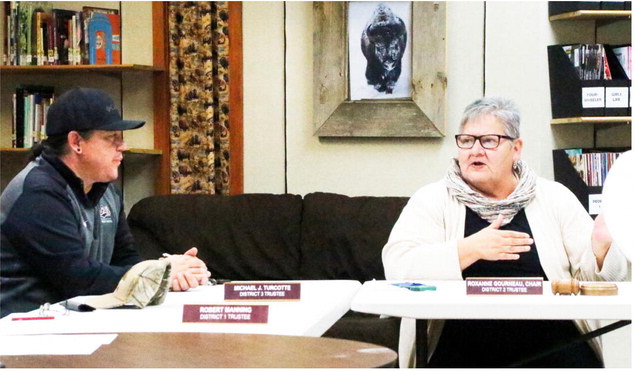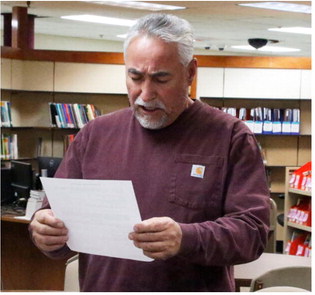Researcher Examines How Rangelands Respond To Heat, Drought


As the climate in the American West becomes increasingly arid and drought stress becomes more common, agricultural producers are seeking to understand how crops weather those warmer and drier trends across Montana’s rangelands. A postdoctoral researcher in Montana State University’s Department of Ecology is exploring some of those questions by delving into the microbial communities in rangeland grasses and how they respond to heat stress and drought.
Hannah Goemann arrived at MSU in 2017 to pursue a doctorate in the College of Agriculture’s Department of Microbiology and Cell Biology. But Goemann’s research has always transcended departmental boundaries: one of her advisers was Brent Peyton, a professor in the Norm Asbjornson College of Engineering’s Chemical and Biological Engineering Department, and she collaborated with faculty in MSU’s Department of Land Resources and Environmental Sciences. After finishing her doctoral studies in December of 2023, she joined Danielle Ulrich, an assistant professor in the ecology department in the College of Letters and Science, to continue her research.
“Agriculture and just being outside in nature have always been in my roots,” said Goemann, who grew up in Minnesota and completed her undergraduate studies at the University of Minnesota at Morris. “I was in the MCB department collaborating with folks across campus and in the Center for Biofilm Engineering. There was a lot of communication there, and a lot of the things I’ve learned from those collaborations, I have been able to take forward into future research projects.”
Goemann’s current work is focused on plant-microbe interactions between a native grass called blue grama and the microbial communities that coexist with it. Because blue grama is naturally drought-tolerant and spread widely across Montana’s grasslands, it was an ideal model species for the work.
The research brings together metagenomics, plant physiology and metabolomics, the study of the metabolites being produced by plant roots as signaling molecules to microbes. Goemann and Ulrich are exploring how the microbial communities change depending on the availability of water or environmental temperature, and how those in turn may impact the health and vitality of blue grama.
“We want to get a holistic picture of how the plants are interacting with microbes and how the microbes might be benefiting plants under those stressful conditions,” Goemann said. “This is all within the big picture of thinking about climate change and how natural systems are adapting, and to see how what we learn from these natural systems can be applied to agricultural systems.”
Blue grama contributes heavily to grassland plant productivity, which is the rate at which new organic matter is created, Goemann said. It is a crucial species for nutrient cycling, which means that understanding how it withstands heat and drought can provide insight into how large swaths of Montana may adapt to an increasingly dry and warm climate.
Goemann had her first experience with scientific research as an undergraduate student in Minnesota. As she has developed as a scientist and researcher, she said numerous mentors such as Peyton and Ulrich have served as guides, supporting her progression both personally and professionally. Earlier this year, supported by a grant of roughly $750,000 that Ulrich received from the USDA’s National Institute of Food and Agriculture, Goemann attended conferences in California and Cape Town, South Africa, which provided opportunities to present her research and continue to build a network of scientists doing similar work. At the International Society for Microbial Ecology Conference in Cape Town, she had her first opportunity to present on an international stage.
“That was the most niche conference I’ve been to,” she said. “Some of the big names were there, and it was awesome to hear what they think is the current status of microbial ecology and where it’s going, and also get some really specific feedback about my own research. It’s been great to get out and share this research with other people.”
One element that has proved particularly exciting to other scientists, Goemann said, is the fact that her work at MSU takes such a comprehensive approach to understanding plant-microbe interactions, incorporating so many scientific realms to create a more complete picture. The more complete the picture becomes, the better gaps in existing knowledge are illuminated.
“Microbes are responsible for the vast majority of all the nutrient cycling in the world, and we know that plant-associated microbes confer various benefits involving nutrient availability, stress protection, water availability and more,” Goemann said. “As our technology has improved, we’ve only increased our understanding of the complexity of the system. There’s become more and more that we don’t know, but we’re getting better at figuring out what those gaps are.”
One recent experiment by Goemann and Ulrich looked at how microbial communities in blue grama stands varied around Montana. They sampled soil from historically drier and wetter sites across the state, then grew blue grama in greenhouses using that soil and measured the microbes found in the different environments. Perhaps unsurprisingly, microbes in the soil that came from the driest areas had more indicators of increased drought resistance. Like a strengthened muscle, they were better prepared to withstand future drought conditions.
As the work continues, Goemann and Ulrich will seek to understand how specific microbes contribute to that drought tolerance and how those takeaways could be translated from grassland and range systems to sustainable agricultural production. Because the puzzle is so big, Goemann calls her work one small part, untangling patterns and trends that could be extrapolated across disciplines.
Goemann has tried to provide similar mentorship to other young scientists, overseeing several undergraduate researchers at MSU during her doctoral studies, some of whom ultimately became contributing authors on published studies. A particularly rewarding element for her has been the relationships and motivation borne from her time as a leader in the MSU Graduate Women in Science and Engineering (WISE) student organization.
“There are so many amazing women doing impactful science here at MSU that I was lucky to meet through WISE,” she said. “I am proud to have been part of a group working hard to improve the culture and support for each other, and other people historically underrepresented in science, and will take that mentality with me through my scientific career.”


